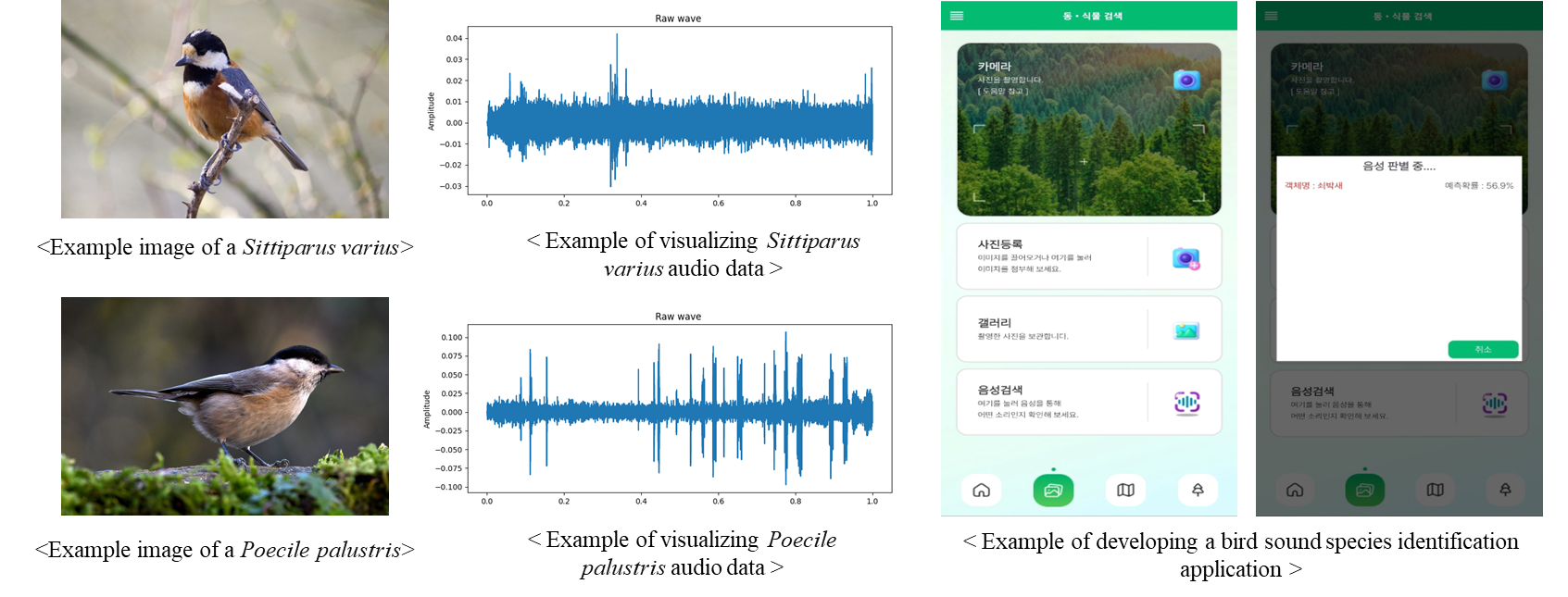상명대 생물정보학 연구실
Research
Study of biological cries using deep learning-based sound classification
Study of biological cries using deep learning-based sound classification
This study aims to enhance the accuracy, efficiency, and scalability of biodiversity monitoring by leveraging deep learning-based acoustic classification technology to analyze biological sounds, identify species, and distinguish individual vocal characteristics.

Vocalization serves as a primary communication method for many organisms, offering critical insights into their behavior, population dynamics, and habitat conditions. Traditionally, bioacoustic analysis has relied on manual sound identification and classification using spectrograms—a method that, while effective, is labor-intensive and requires specialized expertise. However, advances in artificial intelligence (AI), particularly machine learning and deep learning, have facilitated the development of automated acoustic classification systems capable of processing large-scale audio data with minimal human intervention. These technologies are increasingly applied to biodiversity monitoring, endangered and invasive species detection, and dialect analysis in animal communication.
This research is expected to contribute to biodiversity conservation efforts, advance ecosystem understanding, and support the development of robust tools for biodiversity management.

